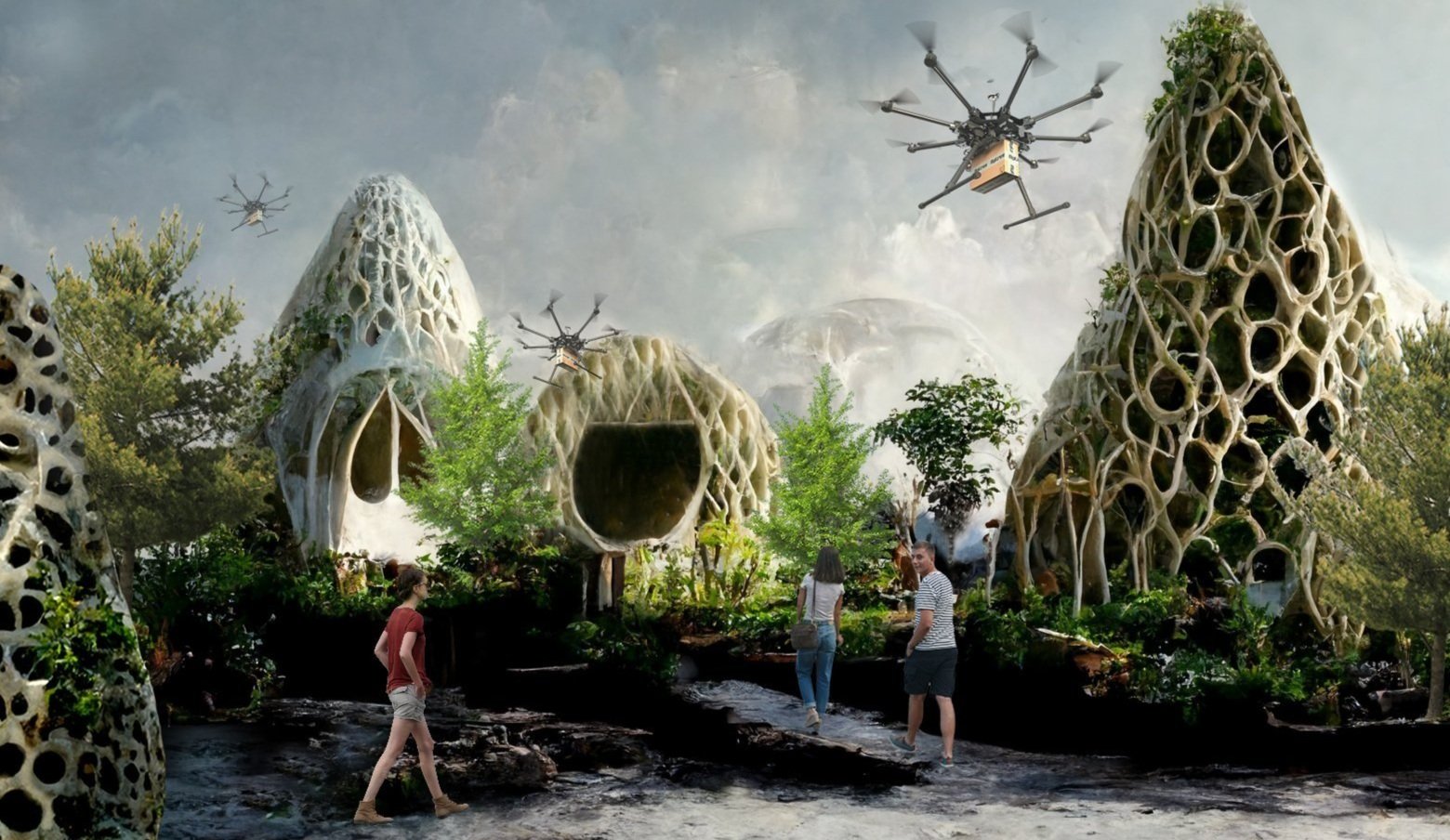3D Printed Mycelium Biocomposites
Rendering
3D printing with mycelium infused hydrogel solution
Living mycelium feedstocks for 3D printing at the architectural scale.
This project develops materials from mushroom roots and natural plant fibers that can be 3D printed to create buildings. These materials, called mycelium biocomposites, can be produced with minimal energy inputs using agricultural and forestry by-products, participating in the circular economy and storing atmospheric carbon emissions.
The building industry contributes to 40% of carbon emissions
Buildings are significant contributors to global warming, producing approximately 40% of anthropogenic carbon emissions. Embodied carbon, which refers to the carbon emissions released as a result of manufacturing construction materials, constructing buildings, and disposing of them at end-of-life, contributes significantly to the overall carbon emissions of buildings.
Optimizing form and eliminating formwork
Research has shown that Additive Manufacturing (AM), also known as 3-Dimensional (3D) printing, can reduce overall material use by optimizing the form of buildings and eliminating the need for formwork. However, most contemporary 3D printing at the building scale uses energy-intensive ordinary Portland cement binders. Replacing these energy-intensive 3D printing feedstocks with low-energy biogenic materials can reduce or even reverse embodied carbon emissions.
Adding value to waste streams
Mycelium biocomposites consist of interlaced hyphal networks (mushroom roots) and cellulose. They can be produced with minimal energy inputs from agricultural and forestry byproducts, adding value to waste streams, participating in the circular economy, and sequestering atmospheric carbon emissions.
The project creates hydrogel-based 3D printing feedstock seeded with Ganoderma lucidum (Reishi mushroom) hyphae. Using AM techniques, these next-generation biogenic materials can be used to create carbon-negative 3D printed buildings with tunable self-healing characteristics, offering ecologically sound architecture.
Project Team
Project Lead
Joseph Dahmen
Research Team
Dr. Nicholas Lin
Ali Makoei
Chloe Naese
Collaborators
Hallam Lab UBC Dept. of Immunology and Microbiology Advanced Biocarbon 3D
Project Funding
Mitacs Acccelerate
Publications
Reishi mycelium incubation






